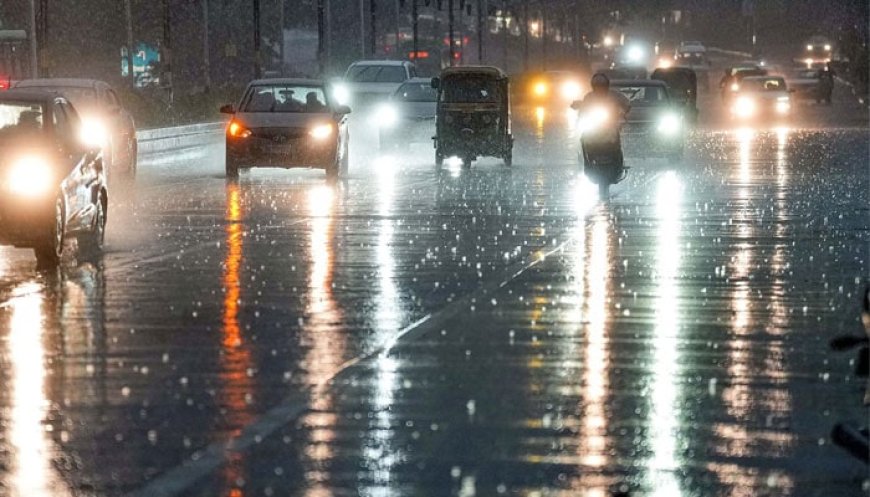Monsoon Rains Claim 111 Lives Across Pakistan: NDMA
As monsoon rains continue to batter different regions of Pakistan, the National Disaster Management Authority (NDMA) has reported that 111 people have died and over 220 have been injured since June 26, 2025. The highest number of deaths has been reported in Punjab and Khyber Pakhtunkhwa, while urban flooding and landslides continue to cause widespread damage in cities like Lahore, Karachi, Quetta, and Muzaffarabad

As monsoon rains continue to batter different regions of Pakistan, the National Disaster Management Authority (NDMA) has reported that 111 people have died and over 220 have been injured since June 26, 2025. The highest number of deaths has been reported in Punjab and Khyber Pakhtunkhwa, while urban flooding and landslides continue to cause widespread damage in cities like Lahore, Karachi, Quetta, and Muzaffarabad. With more heavy rain expected, authorities have urged people in vulnerable areas to take precautionary measures.
-
111 people dead, including children and women
-
220+ people injured across five provinces
-
Heavy rain to continue until July 17, per PMD
-
Hundreds of homes were partially or completely destroyed
-
Most deaths are caused by electrocution, house collapses, and flash floods
-
NDMA has issued high-alert warnings for more flooding, especially in low-lying areas
The 2025 monsoon season has arrived with greater intensity than usual. The heavy downpours have led to:
-
Sudden river flooding in low-lying areas
-
Overflowing drainage systems in major cities
-
Electric shocks and fire hazards from submerged power lines
-
Landslides in hilly and mountainous regions
-
Structural collapse of mud houses and older buildings
The Pakistan Meteorological Department (PMD) has attributed this severity to above-normal monsoon activity driven by climate change and regional low-pressure systems.
-
Over 450 homes have been damaged or destroyed.
-
Main roads flooded, especially in Lahore, Rawalpindi, Karachi, and Quetta.
-
Power outages in dozens of urban and rural areas due to broken lines.
-
Over 100 livestock animals were swept away in rural villages.
-
Schools and clinics flooded in interior Sindh and southern Punjab.
The NDMA and provincial disaster units have taken the following actions:
-
Rescue and relief operations were launched in all five provinces.
-
Deployment of helicopters and boats in flood-affected villages.
-
Distribution of emergency kits, food, water, and blankets.
-
Set up temporary shelters in schools and community centers.
-
Drainage clearance work is underway in urban hotspots.
The NDMA, PMD, and local administrations have jointly issued urgent alerts for the upcoming days:
-
Flash flood warnings for KP, Gilgit-Baltistan, and eastern Balochistan
-
Urban flooding alerts for Karachi, Lahore, and Islamabad
-
Landslide danger in hilly areas like Murree, Azad Kashmir, and Swat
-
Avoid unnecessary travel, especially in flood-prone zones
Lahore:
“Water was up to our waist. My bike was floating away. The electric wires were dangling dangerously,” said Imran Ali, a delivery rider.
Swat:
“We lost two cousins when their car was swept away on the Kalam road. No rescue teams reached for hours,” said Farzana Bibi, a local resident.
Karachi:
“The drainage here never works. Our shop has flooded for the fourth time this year,” reported shoe store owner Tariq Sheikh.
-
A 12-year-old boy in Faisalabad died while trying to unplug a water pump during the rain.
-
In Swat, a family of five was swept away by a flash flood while crossing a small bridge.
-
Rescue volunteers in Quetta saved 20+ villagers trapped on rooftops overnight.
-
In Karachi, a group of university students launched an emergency food drive for those stranded in Korangi.
Dr. Asif Jadoon, Environmentalist:
“Pakistan's vulnerability to climate change is worsening. Monsoons are becoming unpredictable, heavier, and deadlier. We need stronger early warning systems and better urban drainage.”
Eng. Maria Shah, Civil Infrastructure Analyst:
“Most urban areas are not built to handle more than 30mm rain/hour. Lahore, Karachi, and Quetta especially need immediate investment in drainage and water management.”
The tragic toll of 111 lives lost and hundreds injured is a grim reminder of Pakistan’s growing vulnerability to extreme weather. As the rains continue, citizens, communities, and government agencies must remain vigilant and proactive. With better planning, real-time alerts, and infrastructure reform, the nation can reduce the impact of such disasters in the future.

 Mohammad Adil
Mohammad Adil